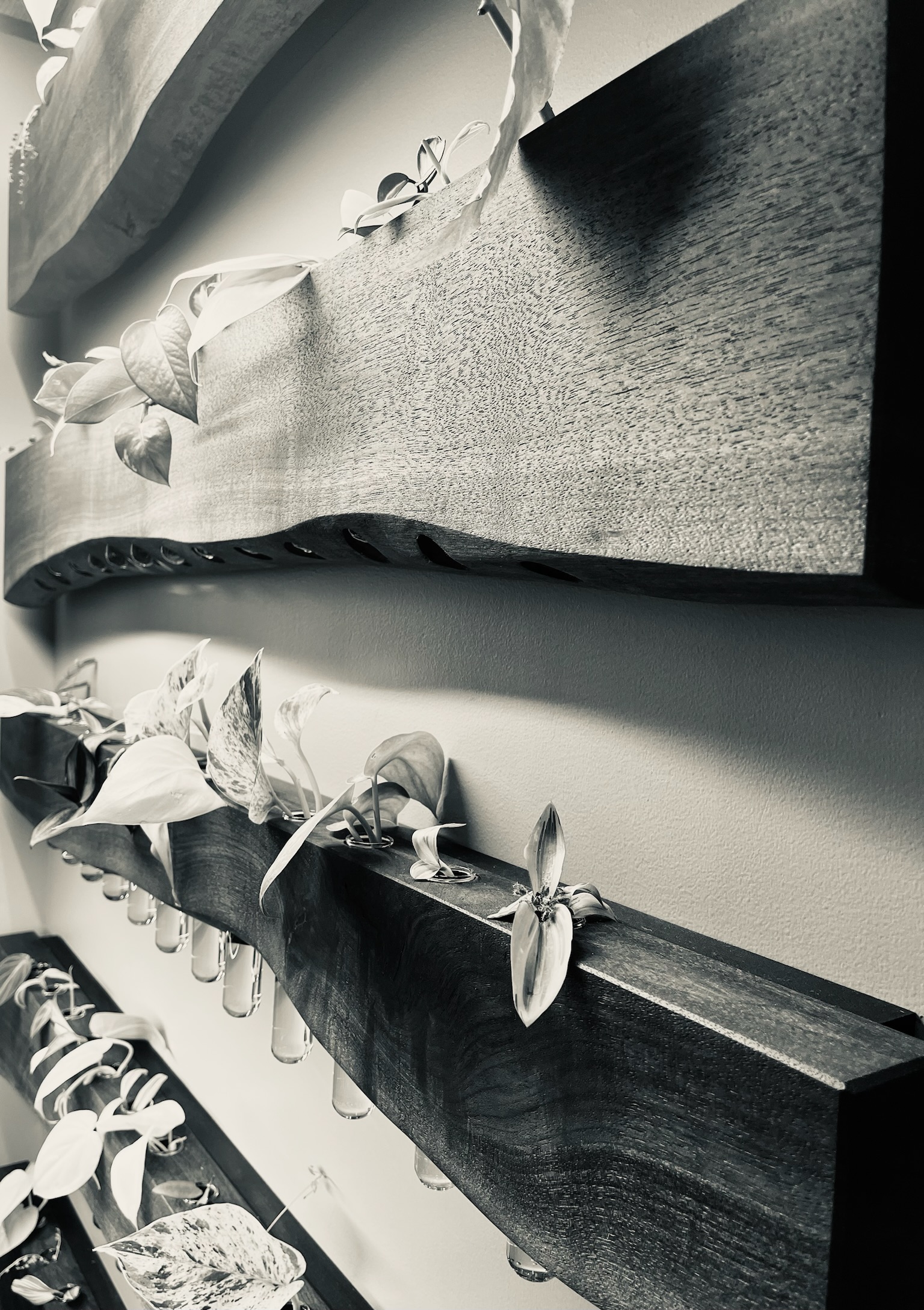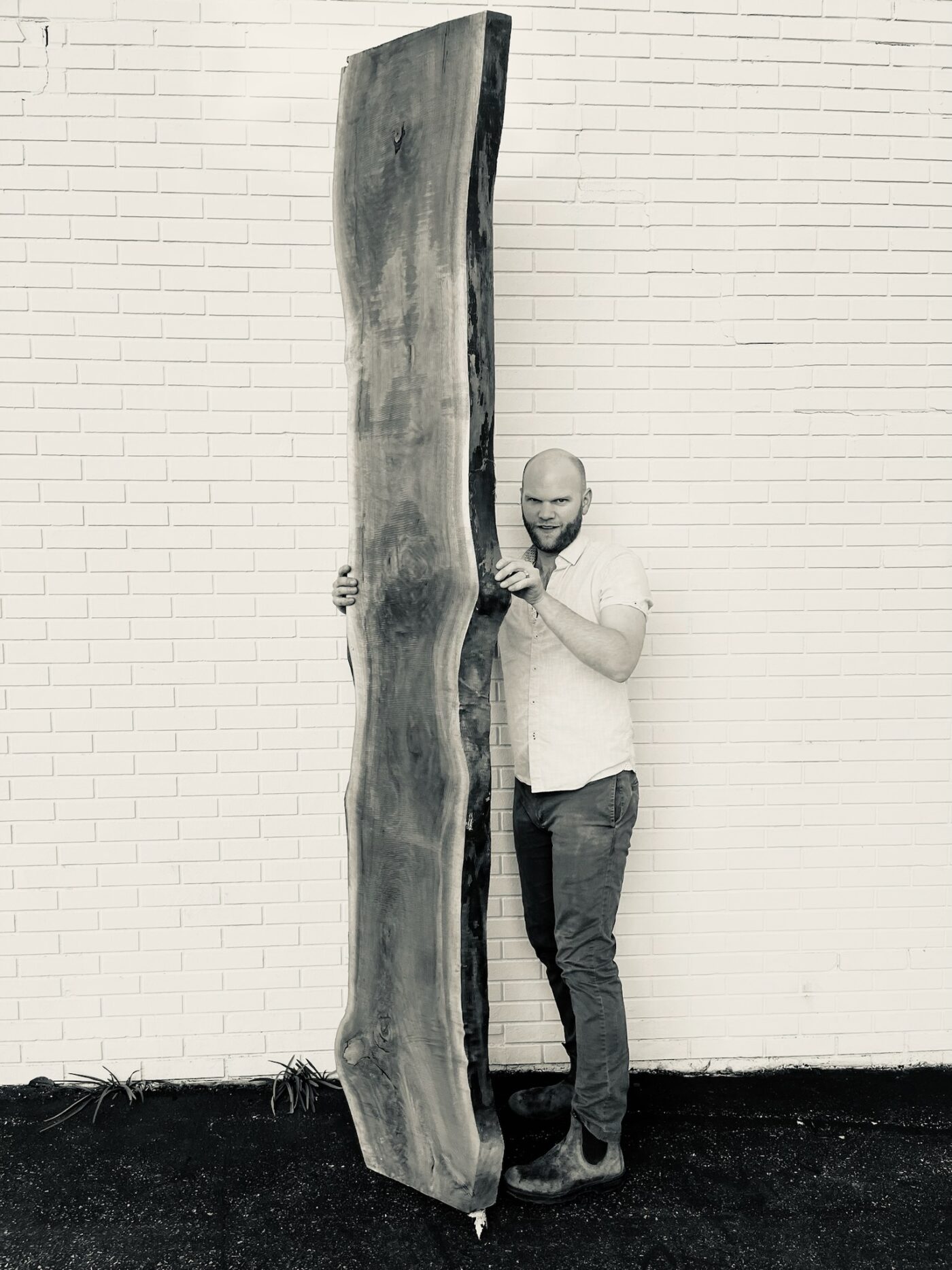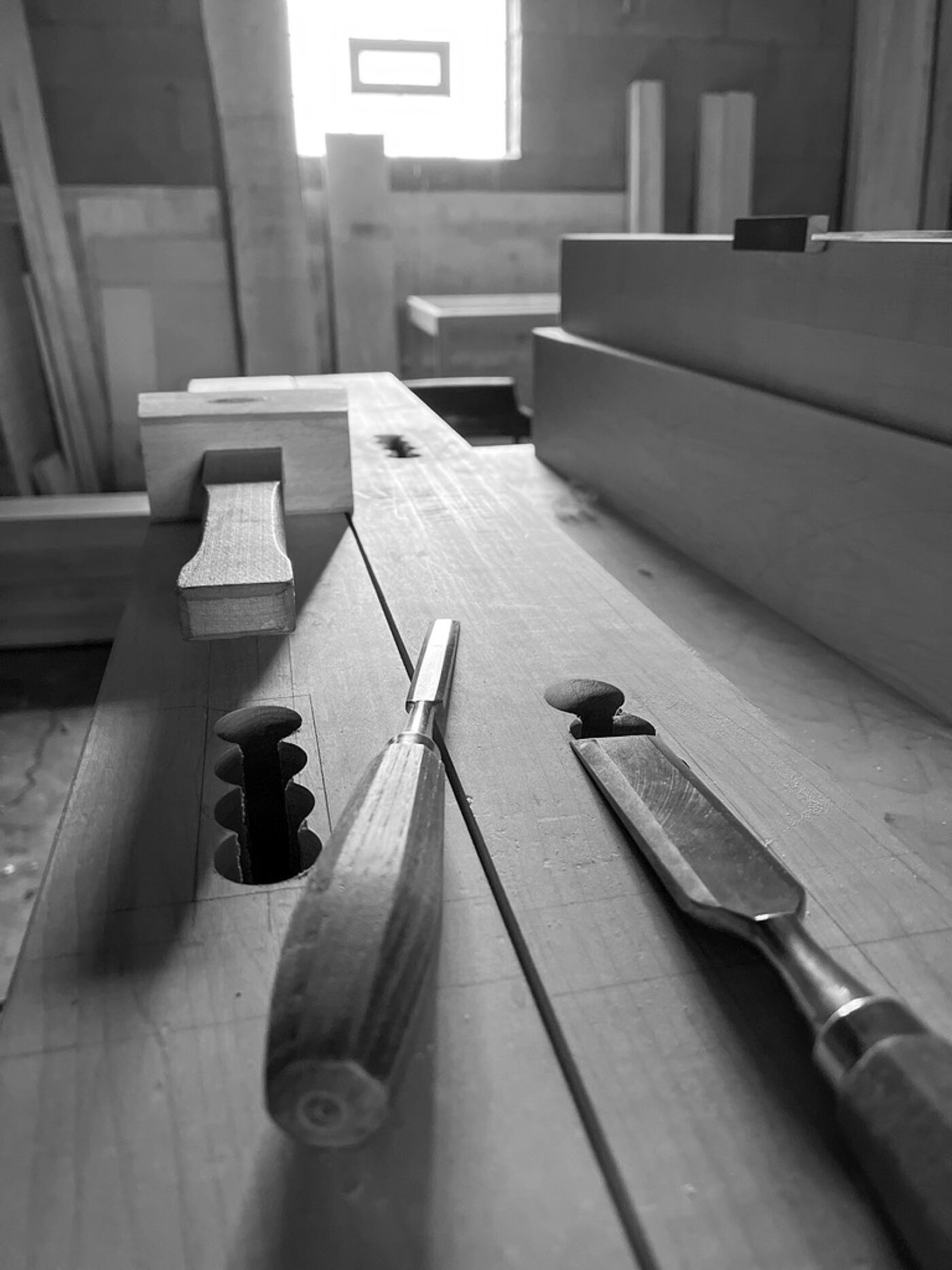Design + Build

The Process
We help our clients visualize their ideas well before their new furniture is physically delivered.
To close the gap between ideation and realization, we gather meaningful details during our design consultation. After carefully weighing their wants, needs, and aspirations for the project, we create digital renderings that serve as visual guideposts.
It is often hard to comprehend where new furniture should be featured and how it will optimally function. To achieve this clarity, we use 3D design software to develop a functional model from which further revisions can be made, if necessary.
Context is a valuable data point. With the use of VR technology, this digital model can be placed in the home or workspace, providing immediate feedback.
The Building Stage
We start by selecting hardwoods sourced by local sawyers. They are knowledgeable about the origin and treatment of the tree before passing through the threshold of the studio.
Wood is a porous and moisture-reactive medium. As it climatizes to the studio, we hone in on key characteristics to preserve in the final work. Then, we perform two millings separated by a rest period. The piece takes form as we join and assemble.
Along this timeline, we provide photographic and textual updates at a cadence that makes sense to the client. These materials can be leveraged for personal or professional marketing purposes.
We highlight unique features with food-safe finishes and stains. As an alternative to paint, we apply a non-toxic finish that doesn’t contain VOCs.


Shaped By Hand
We make distinctive furniture for private homes and professional spaces.
Our portfolio includes, but is not limited to: frames (artwork, mirrors); case furniture (cabinetry); and support pieces (seating, tables, display shelving, non-traditional built-ins).
Working predominantly with hand tools seems counterintuitive to modern production. However, much of the creative process occurs while observing and interacting with wood.
We imbue each build with hand-cut joinery. This traditional approach elevates the intersections where two or more wood planes meet. These junctures become focal points that offer visual interest.
